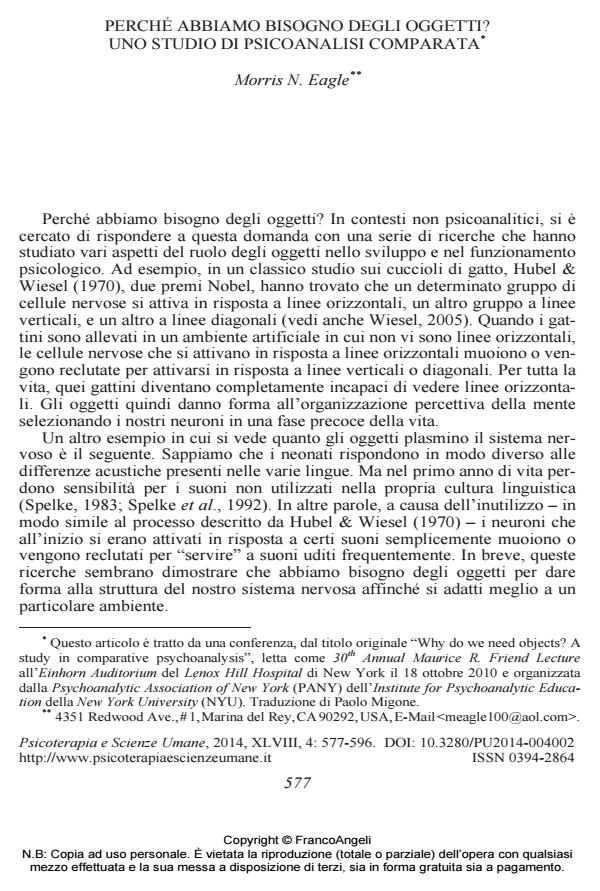Why do we need objects? A study in comparative psychoanalysis
Journal title PSICOTERAPIA E SCIENZE UMANE
Author/s Morris N. Eagle
Publishing Year 2014 Issue 2014/4
Language Italian Pages 20 P. 577-596 File size 82 KB
DOI 10.3280/PU2014-004002
DOI is like a bar code for intellectual property: to have more infomation
click here
Below, you can see the article first page
If you want to buy this article in PDF format, you can do it, following the instructions to buy download credits

FrancoAngeli is member of Publishers International Linking Association, Inc (PILA), a not-for-profit association which run the CrossRef service enabling links to and from online scholarly content.
This paper poses the question of why we need objects and explicates and compares the responses of different psychoanalytic theories. In the course of pursuing this brief study of comparative psychoanalysis through the lens of responding to the question of why we need objects, some interesting and perhaps surprising answers emerge: Freudian and Kleinian theories, more than other theories, most explicitly identify object love as a developmental imperative and as a primary criterion of mental health. A good deal of discussion is devoted to the regulating functions of objects and object relations, and to the role of object love in psychic functioning. Finally, there is some brief discussion of the clinical implications of different responses to the question of why we need objects.
Keywords: Psychoanalytic theory, objects, object relations, object love, regulating functions of objects
Morris N. Eagle, Perché abbiamo bisogno degli oggetti? Uno studio di psicoanalisi comparata in "PSICOTERAPIA E SCIENZE UMANE" 4/2014, pp 577-596, DOI: 10.3280/PU2014-004002